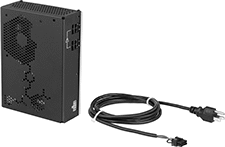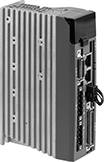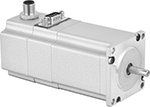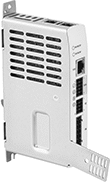Filter by
Mounting Position
Continuous Torque
Motor Type
Direction of Operation
Maximum Rotation Speed
Face Shape
Overall Length
Maximum Holding Torque
Servomotor Brake Type
Input Voltage
Mounting Location
Maximum Torque
Export Control Classification Number (ECCN)
Certification
DFARS Specialty Metals
DC Servomotors with Integrated Drive
Servomotors | Servomotor Input/Output Cords | Servomotor Power Cords | |||||||||||||||||||||||||||||||||||||||||||||||||||||||||||||||||||||||||||||||||||||||||||||||||
|---|---|---|---|---|---|---|---|---|---|---|---|---|---|---|---|---|---|---|---|---|---|---|---|---|---|---|---|---|---|---|---|---|---|---|---|---|---|---|---|---|---|---|---|---|---|---|---|---|---|---|---|---|---|---|---|---|---|---|---|---|---|---|---|---|---|---|---|---|---|---|---|---|---|---|---|---|---|---|---|---|---|---|---|---|---|---|---|---|---|---|---|---|---|---|---|---|---|---|---|
Overall | Shaft | ||||||||||||||||||||||||||||||||||||||||||||||||||||||||||||||||||||||||||||||||||||||||||||||||||
Max. Torque, in·lbf | Continuous Torque, in·lbf | Max. Rotation Speed, rpm | Wattage, W | Voltage, V DC | Lg. | Wd. | Ht. | Dia. | Lg. | No. of Counts per Rev. | Driver Control Mode | Enclosure Rating | Each | Each | Each | ||||||||||||||||||||||||||||||||||||||||||||||||||||||||||||||||||||||||||||||||||||
NEMA 23 Frame Size | |||||||||||||||||||||||||||||||||||||||||||||||||||||||||||||||||||||||||||||||||||||||||||||||||||
| 18.1 | 3.6 | 4,000 | 120 | 75 | 4.1" | 2.3" | 3.2" | 1/4" | 3/4" | 6,400 | Step and Direction | IP53 | 00000000 | 0000000 | 00000000 | 000000 | 00000000 | 000000 | |||||||||||||||||||||||||||||||||||||||||||||||||||||||||||||||||||||||||||||||||
| 30.8 | 6.1 | 3,170 | 173 | 75 | 4.9" | 2.3" | 3.2" | 1/4" | 3/4" | 6,400 | Step and Direction | IP53 | 00000000 | 000000 | 00000000 | 00000 | 00000000 | 00000 | |||||||||||||||||||||||||||||||||||||||||||||||||||||||||||||||||||||||||||||||||
| 38.8 | 7.8 | 2,520 | 193 | 75 | 5.6" | 2.3" | 3.2" | 3/8" | 3/4" | 6,400 | Step and Direction | IP53 | 00000000 | 000000 | 00000000 | 00000 | 00000000 | 00000 | |||||||||||||||||||||||||||||||||||||||||||||||||||||||||||||||||||||||||||||||||
| 51.8 | 10.4 | 1,860 | 213 | 75 | 6.4" | 2.3" | 3.2" | 3/8" | 3/4" | 6,400 | Step and Direction | IP53 | 00000000 | 000000 | 00000000 | 00000 | 00000000 | 00000 | |||||||||||||||||||||||||||||||||||||||||||||||||||||||||||||||||||||||||||||||||
NEMA 34 Frame Size | |||||||||||||||||||||||||||||||||||||||||||||||||||||||||||||||||||||||||||||||||||||||||||||||||||
| 39.9 | 9.4 | 2,320 | 220 | 75 | 4.4" | 3.4" | 4.3" | 1/2" | 1 3/16" | 6,400 | Step and Direction | IP53 | 00000000 | 000000 | 00000000 | 00000 | 00000000 | 00000 | |||||||||||||||||||||||||||||||||||||||||||||||||||||||||||||||||||||||||||||||||
| 68.4 | 18.1 | 1,410 | 227 | 75 | 5.1" | 3.4" | 4.3" | 1/2" | 1 3/16" | 6,400 | Step and Direction | IP53 | 00000000 | 000000 | 00000000 | 00000 | 00000000 | 00000 | |||||||||||||||||||||||||||||||||||||||||||||||||||||||||||||||||||||||||||||||||
| 87.3 | 24.5 | 1,130 | 267 | 75 | 5.9" | 3.4" | 4.3" | 1/2" | 1 3/16" | 6,400 | Step and Direction | IP53 | 00000000 | 000000 | 00000000 | 00000 | 00000000 | 00000 | |||||||||||||||||||||||||||||||||||||||||||||||||||||||||||||||||||||||||||||||||
| 115.3 | 30 | 840 | 280 | 75 | 6.6" | 3.4" | 4.3" | 1/2" | 1 3/16" | 6,400 | Step and Direction | IP53 | 00000000 | 000000 | 00000000 | 00000 | 00000000 | 00000 | |||||||||||||||||||||||||||||||||||||||||||||||||||||||||||||||||||||||||||||||||
DC Servomotors
Servomotors | Servomotor Encoder Cords | Servomotor Power Cords | |||||||||||||||||||||||||||||||||||||||||||||||||||||||||||||||||||||||||||||||||||||||||||||||||
|---|---|---|---|---|---|---|---|---|---|---|---|---|---|---|---|---|---|---|---|---|---|---|---|---|---|---|---|---|---|---|---|---|---|---|---|---|---|---|---|---|---|---|---|---|---|---|---|---|---|---|---|---|---|---|---|---|---|---|---|---|---|---|---|---|---|---|---|---|---|---|---|---|---|---|---|---|---|---|---|---|---|---|---|---|---|---|---|---|---|---|---|---|---|---|---|---|---|---|---|
Shaft, mm | |||||||||||||||||||||||||||||||||||||||||||||||||||||||||||||||||||||||||||||||||||||||||||||||||||
Motor Frame Size | Max. Torque, in·lbf | Continuous Torque, in·lbf | Max. Rotation Speed, rpm | Current, amp | Max. Current, amp | Wattage, W | Voltage, V DC | Dia. | Lg. | No. of Counts per Rev. | Enclosure Rating | Each | Each | Each | |||||||||||||||||||||||||||||||||||||||||||||||||||||||||||||||||||||||||||||||||||||
Without Brake | |||||||||||||||||||||||||||||||||||||||||||||||||||||||||||||||||||||||||||||||||||||||||||||||||||
| 40 mm | 8.5 | 2.8 | 2,900 | 5.2 | 15.6 | 100 | 24 | 8 | 22.5 | 10,000 | IP65 | 0000000 | 0000000 | 00000000 | 0000000 | 00000000 | 0000000 | ||||||||||||||||||||||||||||||||||||||||||||||||||||||||||||||||||||||||||||||||||
| 60 mm | 16.8 | 5.7 | 3,000 | 5.2 | 15.6 | 200 | 48 | 14 | 27 | 10,000 | IP65 | 0000000 | 000000 | 00000000 | 000000 | 00000000 | 000000 | ||||||||||||||||||||||||||||||||||||||||||||||||||||||||||||||||||||||||||||||||||
| 60 mm | 33.6 | 11.2 | 2,500 | 6.9 | 20.7 | 400 | 60 | 14 | 27 | 10,000 | IP65 | 0000000 | 000000 | 00000000 | 000000 | 00000000 | 000000 | ||||||||||||||||||||||||||||||||||||||||||||||||||||||||||||||||||||||||||||||||||
| 60 mm | 33.6 | 11.2 | 3,000 | 12 | 36 | 400 | 48 | 14 | 27 | 10,000 | IP65 | 0000000 | 000000 | 00000000 | 000000 | 00000000 | 000000 | ||||||||||||||||||||||||||||||||||||||||||||||||||||||||||||||||||||||||||||||||||
| 80 mm | 61.1 | 21.2 | 3,000 | 22.5 | 56 | 750 | 48 | 19 | 37 | 10,000 | IP65 | 0000000 | 000000 | 00000000 | 000000 | 00000000 | 000000 | ||||||||||||||||||||||||||||||||||||||||||||||||||||||||||||||||||||||||||||||||||
Stepper Servomotors with Integrated Drive
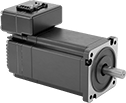 |
Overall | Shaft | No. of Inputs/Outputs | |||||||||||||||||||||||||||||||||||||||||||||||||||||||||||||||||||||||||||||||||||||||||||||||||
|---|---|---|---|---|---|---|---|---|---|---|---|---|---|---|---|---|---|---|---|---|---|---|---|---|---|---|---|---|---|---|---|---|---|---|---|---|---|---|---|---|---|---|---|---|---|---|---|---|---|---|---|---|---|---|---|---|---|---|---|---|---|---|---|---|---|---|---|---|---|---|---|---|---|---|---|---|---|---|---|---|---|---|---|---|---|---|---|---|---|---|---|---|---|---|---|---|---|---|---|
Max. Holding Torque, in·ozf | Max. Rotation Speed, rpm | Voltage, V DC | Current, amp | Step Resolution | Full Step Increment | Lg. | Wd. | Ht. | Dia., mm | Lg., mm | Ctr.-to-Base Lg. | Communication Protocol | Digital Inputs | Analog Inputs | Digital Outputs | Enclosure Rating | Each | ||||||||||||||||||||||||||||||||||||||||||||||||||||||||||||||||||||||||||||||||||
NEMA 23 Frame Size | |||||||||||||||||||||||||||||||||||||||||||||||||||||||||||||||||||||||||||||||||||||||||||||||||||
| 212 | 3,000 | 12 to 70 | 3 | 1 to 1/256 | 1.8° | 5.6" | 2.3" | 3" | 8 | 22.4 | 1.1" | Modbus RTU | 8 | 1 | 4 | IP20 | 0000000 | 0000000 | |||||||||||||||||||||||||||||||||||||||||||||||||||||||||||||||||||||||||||||||||
| 340 | 3,000 | 12 to 70 | 4.3 | 1 to 1/256 | 1.8° | 5.7" | 2.3" | 3" | 8 | 22.4 | 1.1" | Modbus RTU | 8 | 1 | 4 | IP20 | 0000000 | 000000 | |||||||||||||||||||||||||||||||||||||||||||||||||||||||||||||||||||||||||||||||||
NEMA 34 Frame Size | |||||||||||||||||||||||||||||||||||||||||||||||||||||||||||||||||||||||||||||||||||||||||||||||||||
| 382 | 3,000 | 24 to 70 | 5.1 | 1 to 1/256 | 1.8° | 5.9" | 3.4" | 5" | 14 | 35 | 1.7" | Modbus RTU | 8 | 1 | 4 | IP20 | 0000000 | 000000 | |||||||||||||||||||||||||||||||||||||||||||||||||||||||||||||||||||||||||||||||||
| 736 | 3,000 | 24 to 70 | 5.1 | 1 to 1/256 | 1.8° | 7" | 3.4" | 5" | 14 | 35 | 1.7" | Modbus RTU | 8 | 1 | 4 | IP20 | 0000000 | 000000 | |||||||||||||||||||||||||||||||||||||||||||||||||||||||||||||||||||||||||||||||||
| 949 | 3,000 | 24 to 70 | 5.1 | 1 to 1/256 | 1.8° | 8.2" | 3.4" | 5" | 14 | 35 | 1.7" | Modbus RTU | 8 | 1 | 4 | IP20 | 0000000 | 00000000 | |||||||||||||||||||||||||||||||||||||||||||||||||||||||||||||||||||||||||||||||||
| 1,161 | 3,000 | 48 to 70 | 5.2 | 1 to 1/256 | 1.8° | 9.4" | 3.4" | 5" | 14 | 35 | 1.7" | Modbus RTU | 8 | 1 | 4 | IP20 | 0000000 | 00000000 | |||||||||||||||||||||||||||||||||||||||||||||||||||||||||||||||||||||||||||||||||
Stepper Servomotors
Servomotors | Servomotor Encoder Cords | Servomotor Power Cords | |||||||||||||||||||||||||||||||||||||||||||||||||||||||||||||||||||||||||||||||||||||||||||||||||
|---|---|---|---|---|---|---|---|---|---|---|---|---|---|---|---|---|---|---|---|---|---|---|---|---|---|---|---|---|---|---|---|---|---|---|---|---|---|---|---|---|---|---|---|---|---|---|---|---|---|---|---|---|---|---|---|---|---|---|---|---|---|---|---|---|---|---|---|---|---|---|---|---|---|---|---|---|---|---|---|---|---|---|---|---|---|---|---|---|---|---|---|---|---|---|---|---|---|---|---|
Overall | Shaft | ||||||||||||||||||||||||||||||||||||||||||||||||||||||||||||||||||||||||||||||||||||||||||||||||||
Max. Holding Torque, in·ozf | Max. Rotation Speed, rpm | Voltage, V DC | Full Step Increment | Lg. | Wd. | Ht. | Dia. | Lg. | Ctr.-to-Base Lg. | Enclosure Rating | Each | Each | Each | ||||||||||||||||||||||||||||||||||||||||||||||||||||||||||||||||||||||||||||||||||||||
NEMA 17 Frame Size | |||||||||||||||||||||||||||||||||||||||||||||||||||||||||||||||||||||||||||||||||||||||||||||||||||
| 70.8 | 1,740 | 48 | 1.8° | 4.6" | 1.7" | 2.2" | 5 mm | 22 mm | 0.83" | IP54 | 0000000 | 0000000 | 00000000 | 0000000 | 00000000 | 0000000 | |||||||||||||||||||||||||||||||||||||||||||||||||||||||||||||||||||||||||||||||||||
NEMA 23 Frame Size | |||||||||||||||||||||||||||||||||||||||||||||||||||||||||||||||||||||||||||||||||||||||||||||||||||
| 113.3 | 2,720 | 48 | 1.8° | 4.8" | 2.3" | 2.7" | 1/4" | 3/4" | 1.11" | IP54 | 0000000 | 000000 | 00000000 | 000000 | 00000000 | 000000 | |||||||||||||||||||||||||||||||||||||||||||||||||||||||||||||||||||||||||||||||||||
| 198.3 | 1,940 | 48 | 1.8° | 5.7" | 2.3" | 2.7" | 1/4" | 3/4" | 1.11" | IP54 | 0000000 | 000000 | 00000000 | 000000 | 00000000 | 000000 | |||||||||||||||||||||||||||||||||||||||||||||||||||||||||||||||||||||||||||||||||||
NEMA 34 Frame Size | |||||||||||||||||||||||||||||||||||||||||||||||||||||||||||||||||||||||||||||||||||||||||||||||||||
| 354 | 2,130 | 48 | 1.8° | 5.5" | 3.4" | 3.9" | 11 mm | 25 mm | 1.69" | IP54 | 0000000 | 000000 | 00000000 | 000000 | 00000000 | 000000 | |||||||||||||||||||||||||||||||||||||||||||||||||||||||||||||||||||||||||||||||||||
| 835.5 | 550 | 48 | 1.8° | 6.8" | 3.4" | 3.9" | 11 mm | 25 mm | 1.69" | IP54 | 0000000 | 000000 | 00000000 | 000000 | 00000000 | 000000 | |||||||||||||||||||||||||||||||||||||||||||||||||||||||||||||||||||||||||||||||||||
| 1,317 | 430 | 48 | 1.8° | 8" | 3.4" | 3.9" | 11 mm | 25 mm | 1.69" | IP54 | 0000000 | 000000 | 00000000 | 000000 | 00000000 | 000000 | |||||||||||||||||||||||||||||||||||||||||||||||||||||||||||||||||||||||||||||||||||



























